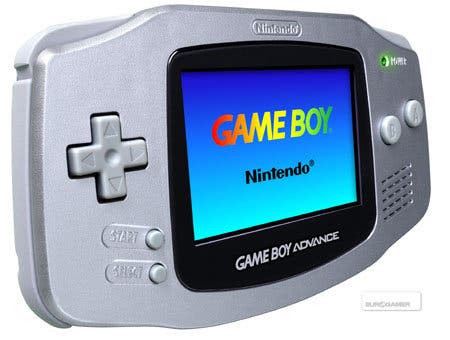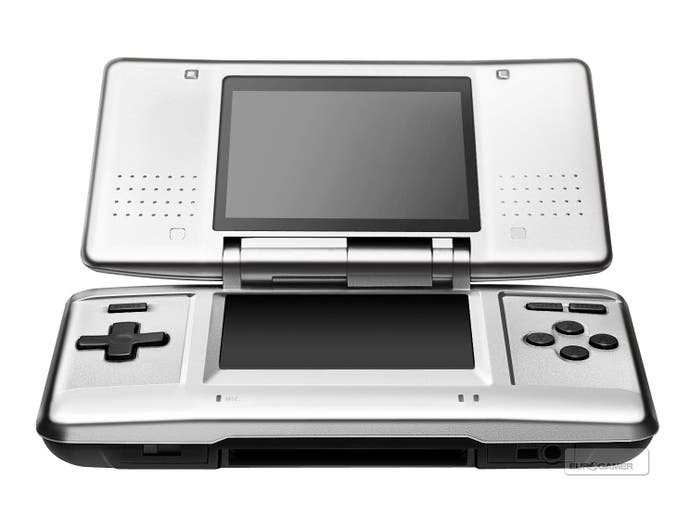Retrospective: Nintendo's Handheld Legacy
From Game & Watch to the DSi.
Game Boy Advance
The Virtual Boy floundered within months of release, and Yokoi himself very sadly died in a car accident two years later, having been given the cold shoulder somewhat by Nintendo, while also finding the time to design the quirky WonderSwan for Bandai.
Meanwhile, Nintendo's actual successor to the Game Boy was the admirably straightforward Game Boy Advance, a no-nonsense handheld console released in 2001, which really did manage to provide everything you might expect from a sequel to the most popular gaming hardware of all time: more power, fewer batteries, a couple of extra buttons (including shoulder triggers), and bigger, brighter, games.
The GBA is front-loaded with classic software, from Golden Sun to the rumble-iscious (sorry) Drill Dozer, which came in its own buzzy little cartridge. Series that would help define the system included the utterly unmissable Advance Wars, and almost all of Nintendo's franchises had strong showings.
It was also front-loaded with Classic software, however: while GBA owners would get a new Mario Kart, a couple of nice Mushroom Kingdom offshoots like Mario Vs Donkey Kong, and a new Zelda, albeit one designed by Capcom in the form of the Minish Cap, they'd have to make do with reissued, upgraded versions of classic adventures when it came to a new platform game featuring the world famous plumber.

The closest he ever came to a bespoke title on the handheld would be AlphaDream's genuinely brilliant Mario & Luigi: Superstar Saga, an ingenious RPG with a great story and excellent combat. It's a title that remains, with its vivid purple and gold backdrops and air of globe-spanning mystery, one of the greatest Christmas games of all time.
Elsewhere, while there were plenty of crazy attachments available, not least an e-reader which allowed you to scan in old Nintendo games stored on packs of cards, you could also connect the GBA to the GameCube to play titles like Pac-Man Vs and Zelda: Four Swords Adventures. Few did, even though the games themselves were largely excellent.
Players might have got a more powerful system, but, for the first iteration at least, they'd have to make do with an upgraded version of the same old unlit screen, which required reflected light in order for the device to be playable. As ever, third-parties rushed in with a series of bizarre add-ons, most involving magnifying glasses and pathetic little torch bulbs, many of which weren't very good, while modders broke into the guts of the machine and positioned little LEDs around the edges.
Nintendo got into the act in the end with the GBA SP, released in 2003, a beautiful clamshelled device with a frontlit (and then eventually backlit) screen, a smaller footprint and - why? - the wholesale removal of the headphones jack.
Fans of headphones would have to wait for another iteration - the GB Micro, a wonderful miniature console seemingly released for the hell of it in 2005. The Micro had the best screen yet - backlit and bright, with great colours - and the whole thing was so tiny you could put it on your keychain or lose it in any number of unlikely places. While it did much to remind people how much they loved the GBA, however, its success was severely limited as the console rushed towards its inevitable twilight.
That didn't really matter, though, as change was on the way, in the quirky form of the DS.
Nintendo DS
Codenamed Nitro, leaked spec sheets for the DS made it absolutely impossible to understand what Nintendo was initially planning: stylus control, a microphone, and two screens? It can be hard now to remember just how strange this list of features sounded. Nintendo clarified things somewhat at E3 2004, with a demonstration Yoshi Touch And Go, a spiritual successor to Yoshi's Island, which had Baby Mario falling through the sky, protected by lines of clouds drawn by the player, but the overall feeling remained that the DS was a risky, tremendously niche move for a company that had seen its market share of the home console space steadily erode over the last decade.

Many commentators said that the DS was most likely a temporary stopgap until the next Game Boy, and even more complained about how clunky the hardware seemed compared to Sony's shiny bauble. The Guardian's Nick Gillet even suggested Nintendo's latest looked like it had been knocked up in a shed.
Early third-party software almost certainly had been: Titles like Sprung, Ubisoft's grim dating sim, and EA's tragic The Urbz clearly struggled with the idea of the machine, while Ridge Racer took things a little too literally with an on-screen steering wheel manipulated with the stylus which was, as it sounds, about as much fun as being shot through the nuts with a musket.
Over time, however, developers started to understand the system: Cing's gentle and rather creepy Another Code made the most of the DS's dual perspectives for some interesting puzzles, Capcom produced a dazzling Viewtiful Joe update that had some typically unique uses for the stylus, all of which snapped into place rather nicely with the sort of things you'd expect from the series, while Square-Enix ignored most of the features entirely with the brilliant Rocket Slime, one of the few games I would have no trouble recommending to absolutely anybody: a bubbly isometric cartoon adventure that divides its time confidently between simple combat-heavy exploration, and massive real-time tank battles. Please check it out if you haven't already.
But it was, of course, Nintendo who understood the DS better than anybody. Games like Super Mario 64 DS may have been pleasant enough, but they seemed somewhat forced on the system: with Yoshi's outing, the quirky, highly focused style of game that the DS supported became clear, and then with Nintendogs and Dr Kawashima's Brain Training, Nintendo somehow managed to do what many publishers and platform holders suspected had been impossible: they opened gaming up to the broadest, and strangest of demographics, turning the DS into something your mum owned, and something your granny might use.
Through a mixture of friendly pseudo-science, calm self-help-style adverts, and the towering presence of luminaries like Chris Tarrant photographed looking at a DS while frowning - possibly because he's checking the onboard calendar and realises he's booked in two conflicting sexual liaisons on the same day - everyone was playing.
More traditional gamers may not have liked rubbing shoulders with the grey crowd in Game, but few would actually deny Brain Training wasn't worryingly entertaining, and, even if they did, they still had Rocket Slime, right?
